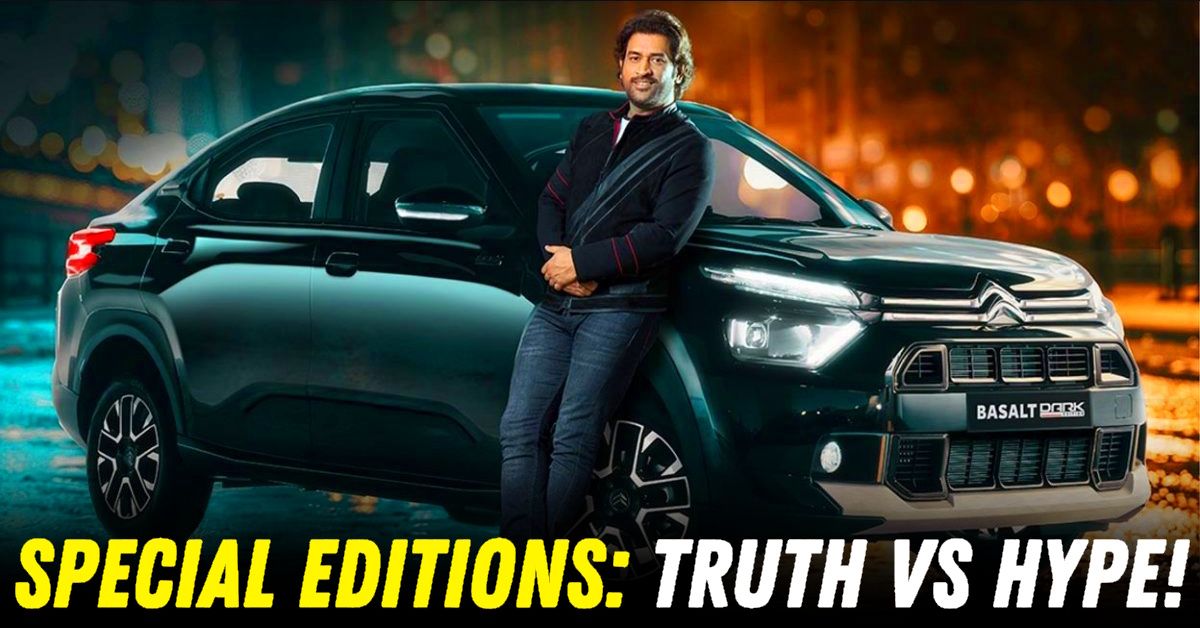Fancy Colours, Same Old Car? The Truth About Special Edition Models


If you've been browsing new cars online or walking through a dealership lately, chances are you've stumbled upon a “special edition” model. Glossy black alloys, contrasting roof colours, sporty badges, and new paint jobs—these cars look fresh and exciting on the surface.
But underneath, they’re often the same machines already on sale, with no real mechanical upgrades or significant feature additions. As Indian car buyers become more informed and price-sensitive, it’s worth asking: are these special editions really worth your money?
In most cases, a special edition vehicle offers only cosmetic changes. Think of a regular Maruti Brezza that gets a matte paint job and blacked-out wheels and is then rebranded as a "Sports Edition."
Or a Tata Nexon with contrast stitching and a dark roof wrap being pitched as a "Jet Edition." The price difference? Sometimes as little as ₹10,000 to ₹40,000. The problem isn’t the pricing; it’s what you're getting in return. For many consumers, these additions are more about perceived exclusivity than actual value.
In reality, most special editions in India are repackaged trims of existing models. There’s rarely a performance tweak, suspension upgrade, or meaningful change in tech or safety. In global markets, performance-oriented editions like the GTI or N Line versions bring retuned engines and enhanced dynamics. In contrast, Indian special editions focus mostly on visual flair.
Automakers often introduce these variants when regular versions of the car begin to lose their shine in the market. It's a marketing play designed to create buzz without the cost of a full redesign or feature overhaul. When competition heats up or newer models arrive in the segment, special editions become a way to stay in the conversation without fundamentally changing the product.
From a company’s point of view, it makes sense. Paint and trim changes are far cheaper to implement than platform upgrades or engine enhancements. For example, a manufacturer may already be producing several colours of a car for different markets. Wrapping an existing colour into a “limited run” for India becomes a low-effort way to push up sales numbers and attract showroom footfall.
Today's car buyer, especially in the ₹10–20 lakh range, is well-informed. Thanks to online reviews, ownership forums, and real-world feedback shared on YouTube and social media, consumers can easily spot what’s new and what’s not. They can tell when a car’s “new” version is mostly badge-deep.
Moreover, many buyers now prioritise safety features, technology, and fuel efficiency over mere cosmetic changes. A few years ago, an all-black edition or dual-tone roof may have turned heads. Now, unless the edition includes something substantial like a larger touchscreen, added airbags, or better warranty coverage, it simply doesn’t stand out.
Yes, occasionally a special edition can be good value. Mahindra’s Scorpio-N Z8 Select variant recently added meaningful features at a more affordable price point. Similarly, if you were anyway planning to add accessories like alloy wheels or body kits, and the special edition offers them as a bundled deal, it could save you some effort and money. But such examples are few and far between.
If you're tempted by a limited-run edition, ask yourself one simple question: what exactly is different from the standard version? Check the brochure carefully. Compare it side-by-side with the regular variant in terms of engine specs, safety tech, infotainment, and warranty. If the only changes are colour themes, decals, and interior highlights, it may be smarter to buy the regular model and customise it to your taste later.
In an age where car prices are climbing steadily and buyers are holding on to their vehicles for longer, spending wisely matters more than ever. A fresh coat of paint and a fancy name may not always be worth the premium.